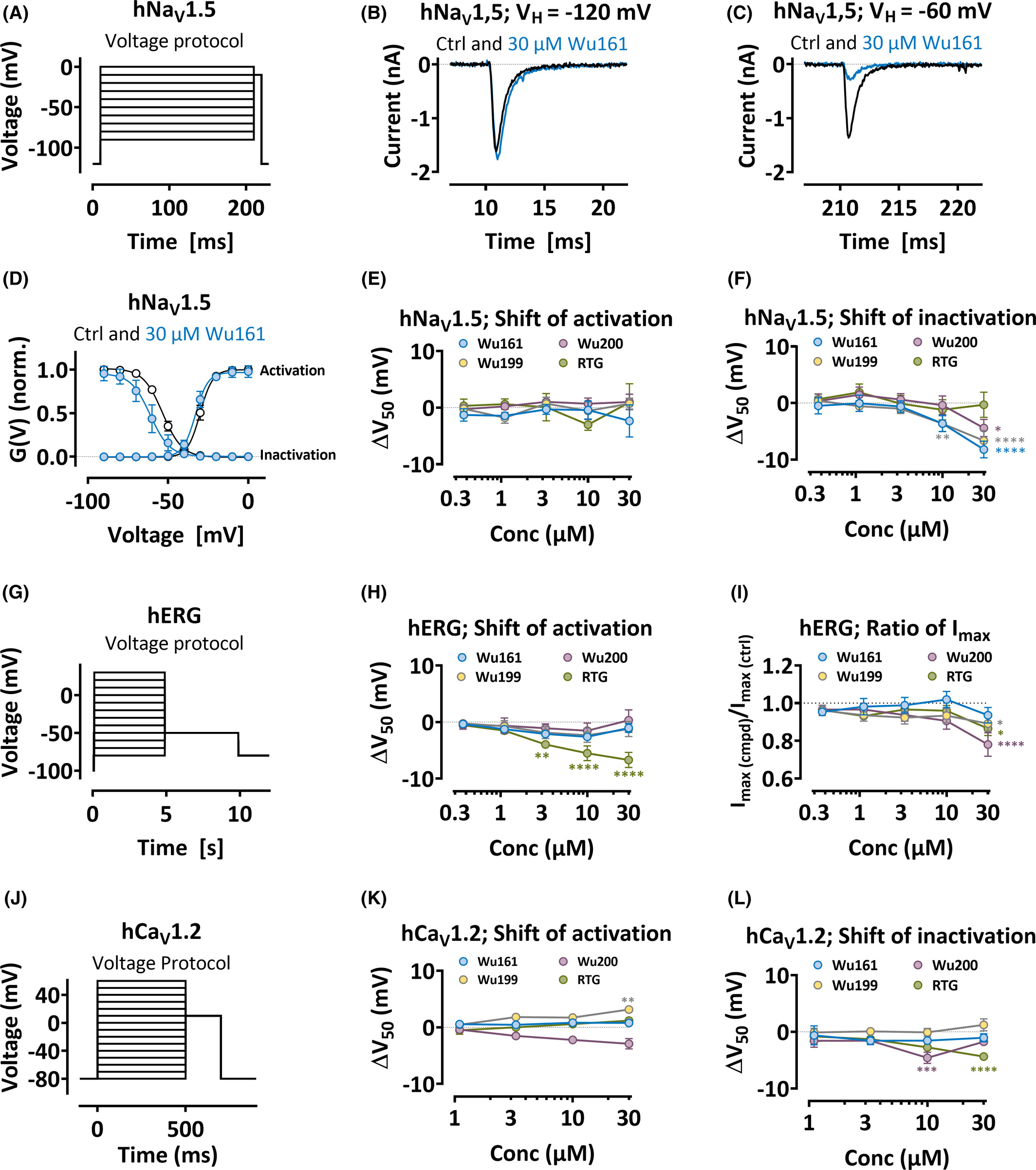Fig. 5 Selectivity for compounds (as indicated) among other ion channels expressed in cell lines HEK-NaV1.5, CHO-hERG DUO, and CHO-CaV1.2, using automated patch clamp. A, Voltage step protocol for hNaV1.5. B, Currents for hNaV1.5 in control or Wu161 as indicated. Holding voltage (VH) = −120 mV. Test step voltage = −20 mV. C, Holding voltage = −60 mV. Test step voltage = −10 mV. D, G(V) curves as indicated. Activation curve; test step voltage indicated on x-axis. Inactivation curve; holding voltage indicated on x-axis. Data = mean ± SEM (n = 4). Equation 2: V50 (activation) = −30.1 ± 1.5 mV, −33.5 ± 2.7 mV; V50 (inactivation) = −53.8 ± 1.1 mV, −65.5 ± 1.2 mV. E, Concentration response for G(V) shifts (ΔV50) as indicated. Data = mean ± SEM (n = 3–10). Data are baseline corrected (i.e., saline). Two-way ANOVA with Dunnett's multiple comparisons test showed no significant deviation from saline. F, Concentration response for steady-state inactivation shifts as indicated (see E for explanation). *, p < .05; **, p < .01; ****, p < .0001. G, Voltage step protocol for hERG. H, Concentration response for G(V) shifts as indicated (see E for explanation). (n = 4–6). **, p < .01; ****, p < .0001. I, Concentration response for the ratio of IMAX as indicated (see E for explanation). (n = 4–6). *, p < .05; ****, p < .0001. J, Voltage step protocol for hCaV1.2. K, Concentration response for the shift of the G(V) as indicated (see E for explanation. (n = 4–12). **, p < .01. L, Concentration response for the steady-state inactivation shifts as indicated (see E for explanation). (n = 4–12). ***, p < .001; ****, p < .0001
Image
Figure Caption
Acknowledgments
This image is the copyrighted work of the attributed author or publisher, and
ZFIN has permission only to display this image to its users.
Additional permissions should be obtained from the applicable author or publisher of the image.
Full text @ Epilepsia

